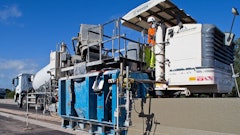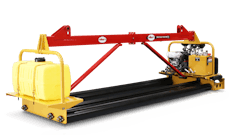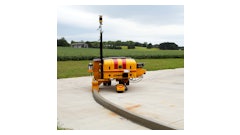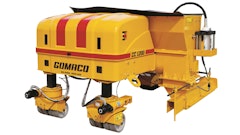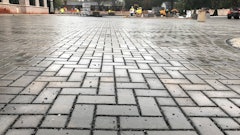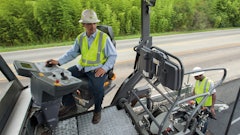
The West Dodge Street overhead expressway is destined to reshape the heart of Omaha, NE. As part of an overall $102 million contract, the expressway's three eastbound and three westbound lanes from 126th Street to Interstate 680 are designed to handle the gridlocked area's traffic demands - projected to be 144,000 vehicles per day in 2020 - well into the future.
Construction of the two-mile-long overpass began in July 2004 with a scheduled November 2008 completion date. However, Hawkins Construction Co., the project's primary contractor, had a different timeframe in mind.
"It is possible to knock off a lot of time if you are able to create repetitive work on a project like this," says Karl Burns, public relations coordinator for the Nebraska Department of Roads (NDOR). He was impressed with how Hawkins' experienced project coordinators shifted some project components to create repetitive work, which ultimately paid off for both the contractor and the NDOR.
A strong incentive
There were five major project construction areas that included incentive-disincentive clauses: the north and south frontage roads, the eastbound and westbound overpass structures and the bridges over 108th Avenue.
Hawkins was able to cut the specified time for reconstructing the north frontage road between 114th and 118th Streets in half. In addition, it completed the south frontage road between 114th and 117th Streets - scheduled to be reconstructed over two seasons - within the 2005 construction season.
However, the most time-sensitive component of the $63 million overpass was the work at 108th Avenue, which completely closed the busy 120th Street interchange. Since Burke High School is just off of 120th Street, this had to be completed over the summer months.
Due to the quick work on the other projects, Hawkins was able to renegotiate the project contract and complete this work in 2006 instead of 2007. It also beat the 88-day deadline by four days, enabling Hawkins and its employees to take home the maximum bonus of $560,000.
According to Lance Winkler, project superintendent for Hawkins, "The keys to our success on the project were manpower and equipment."
Hawkins employed 60 to 80 workers throughout the project's duration, working a six-day work week. Their schedules were staggered, so the company could continue operations seven days a week. Since the workers shared in a portion of the incentive money, they were motivated to quickly deliver a quality product.
Equipment's role
The equipment used on the site included a Bid-Well 4800 automatic roller paver, which was purchased specifically for the project. It was used to lay nearly 25,000 cu. yds. of concrete along the eight lane-miles of expressway.
In business for more than 80 years, Hawkins is no stranger to concrete paving equipment. The company owns a number of slipform and bridge pavers. However, this was its first experience with the Bid-Well paver. "We like the rigidity of the 4800. The paver is bigger, but it does not weigh much more than other rail pavers," says Terry Kirsch, equipment manager for Hawkins.
The 4800 features standard paving widths from 12 to 33.4 ft. However, Hawkins' unit was equipped to handle the average 52-ft. full-width paving of the eastbound and westbound lanes of the Dodge Street Overpass.
The paver also has a 48-in. truss depth that houses the operator's console. In addition, it rides the rails on six-wheel bogies rather than four. "The sturdy design of the bogie system eliminated a lot of the surface deflection, so we had minimal grinding required," notes Winkler.
The project called for five different mix designs - falling under the Nebraska 47-BD spec - with strengths ranging from 3,500 to over 5,000 psi. The 4800 utilized its patented ROTA-VIBE system to compact each of the mixes to desired densities. This free-wheeling vibratory unit rides on heavy-duty hold-down and bogied carriage rollers. Its light vibrator touch facilitates sealing of difficult-to-finish mixes.
"The ROTA-VIBE [and 5-ft. roller-enhanced paving system] finished well, even on the crowned surfaces," says Winkler.
Double flighting on the paver's dual spreading augers provided more accurate concrete strike-off, which also saved manpower. "With the 4800's extended augers, we didn't have as many people pulling material from the machine," says Winkler.
Charging forward
With both eastbound and westbound expressway lanes now open to traffic, Hawkins can shift its focus to the last phase of the project: the at-grade reconstruction of Dodge Street from Old Mill to 120th Street. Originally slated for 2008, this project will begin a full year ahead of schedule.
Once the project is complete, the upper and lower lanes of Dodge Street will be capable of efficiently channeling up to 200,000 vehicles per day between Interstate 680 and 126th Street. This should be sufficient capacity to handle projected traffic loads well into the second half of the century.







